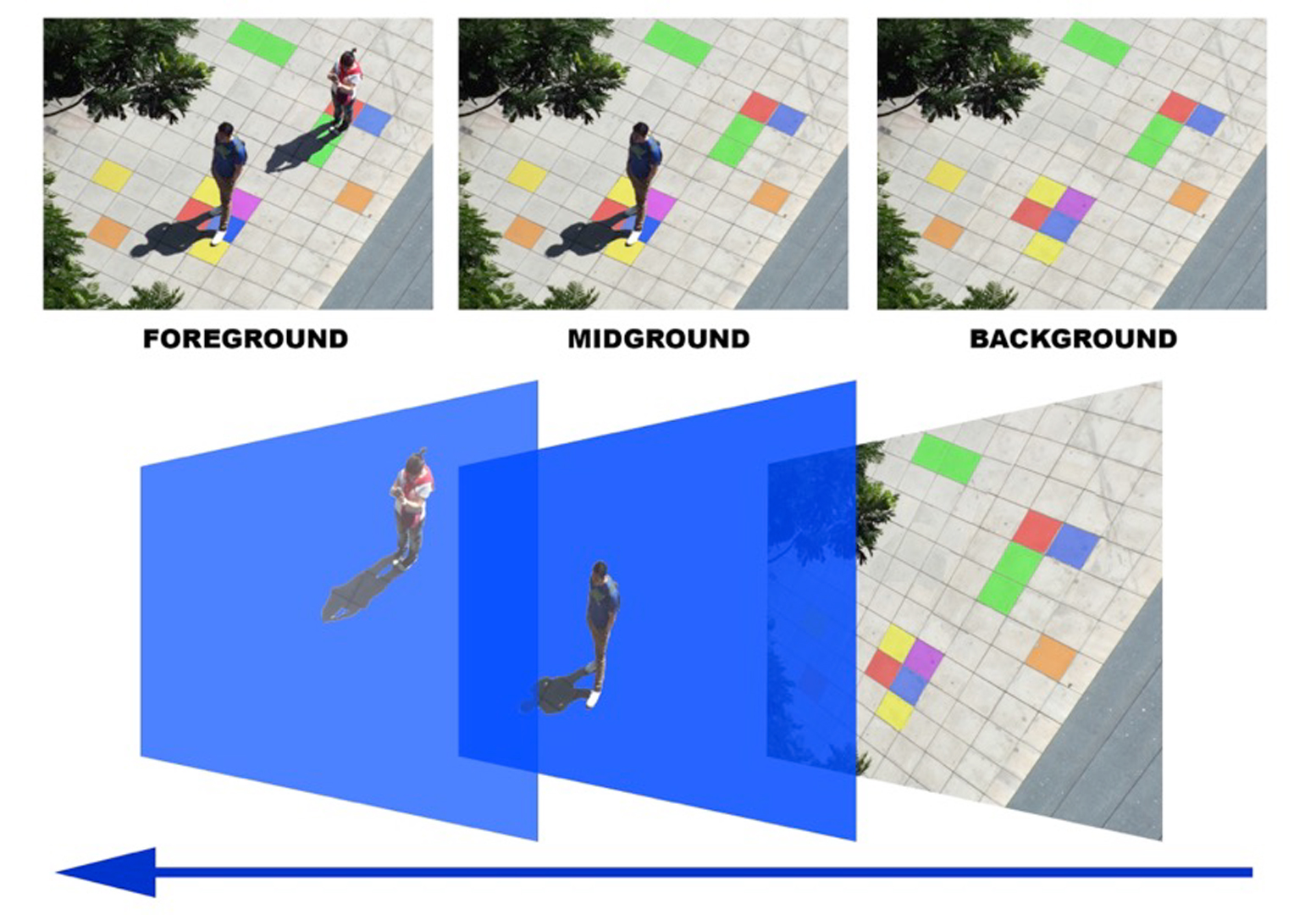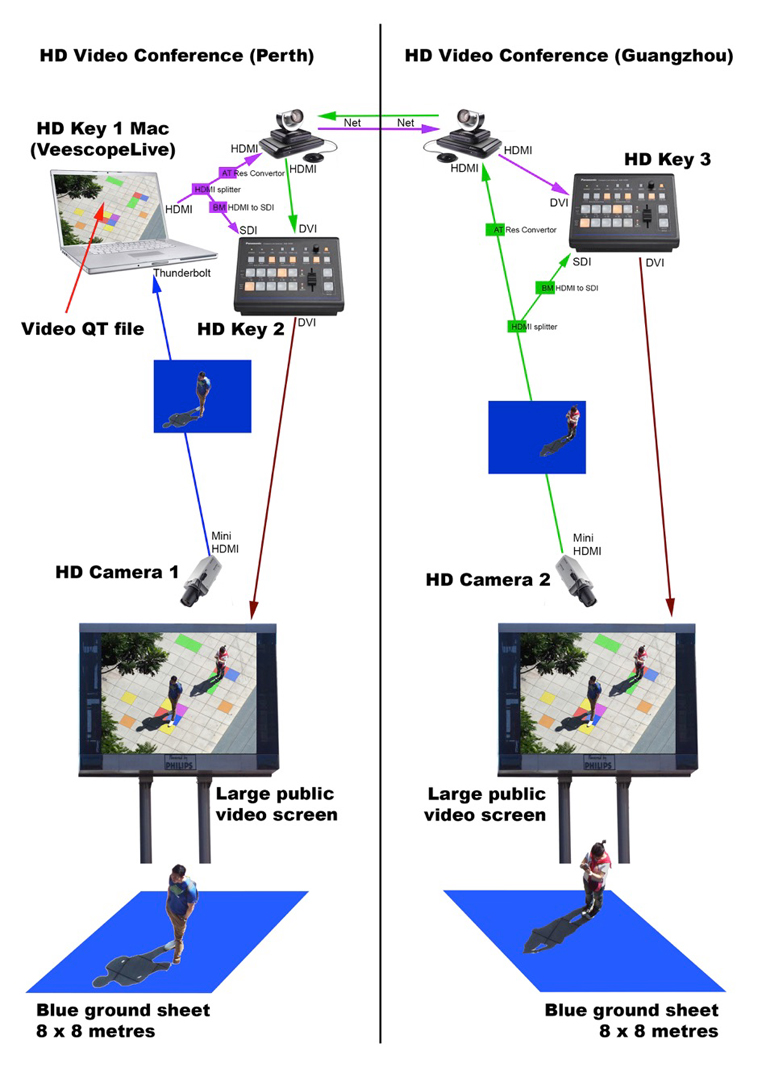“Peoples Screen” presented by Sermon and Gould
Symposium:
- ISEA2016: 22nd International Symposium on Electronic Art
-
More presentations from ISEA2016:


Session Title:
- Participation, Urban Screen, Public Art
Presentation Title:
- Peoples Screen
Presenter(s):
Venue(s):
Abstract:
“Peoples Screen” by Paul Sermon and Charlotte Gould was a site-specific work commissioned by Public Art Lab Berlin for the Guangzhou Light Festival from 15 to 29 November 2015, linking audiences in Guangzhou’s new Flower Garden Square, China and Northbridge Piazza in Perth, Australia. Receiving over 25,000 participants over 15 days. This installation builds on practice-based research and development of previous interactive works for large format urban screens such as “Occupy the Screen” for “Connecting Cities – Urban Reflections” in September 2014 between Supermarkt Gallery Berlin, Germany and Riga European Capital of Culture, Latvia.
This new installation pushed the playful, social and public engagement aspects of the work into new cultural and political realms in an attempt to ‘reclaim the urban screens’ through developments in ludic interaction and internet based high-definition videoconferencing. Through the use of illustrated references to site-specific landmarks of Guangzhou and Perth, audiences were invited to occupy the screen. The concept development of “Peoples Screen” was inspired in part by 3D street art as a DIY tradition, referencing the subversive language of graffiti. The interface borrows from the “topoi” of the computer game, as a means to navigate the environment; once within the frame the audience becomes a character immersed within the environment.
“Peoples Screen” linked two geographically distant audiences using a telematics technique; the installation takes live oblique camera shots from above the screen of each of these two audience groups, located on a large 64 square metre blue ground sheet and combines them on screen in a single composited image. As the merged audiences start to explore this collaborative, shared ludic interface, they discover the ground beneath them, as it appears on screen as a digital backdrop, locates them in a variety of surprising and intriguing anamorphic environments where from a particular position the characters can look as if in a precarious situation.
“Peoples Screen” aimed to include the widest range of urban participation possible and aligns to a Fluxus “Happening” in a move away from the object as art towards the street environment and the “every day” experience. It also borrows from a tradition of early cinema where audiences were transfixed by the magic of being transported to alternative realities though screenings at traveling fairs. Lumière contemporaries, Mitchell and Kenyon, whose films of public crowds in the 1900’s present a striking similarity to the way audiences react and respond to “Peoples Screen”.
Through this research we found that the environment and timing have a large impact on the way that an audience responds. The inspiration was drawn both from the cities of Guangzhou and Perth, with input from the communities. The area of play was clearly demarked as a space via a blue box groundsheet in both cities identifying a theatre of play, once in the space the participant engages as they wish. In many ways “Peoples Screen” broke down cultural and social barriers, both in the local communities, but also between two cities, Guangzhou and Perth, where new collocated spaces and creative encounters could be founded and occupied.
Acknowledgements:
Project Partners: Connecting Cities, Public Art Lab Berlin, Guangzhou Light Festival, Northbridge Piazza Perth.






